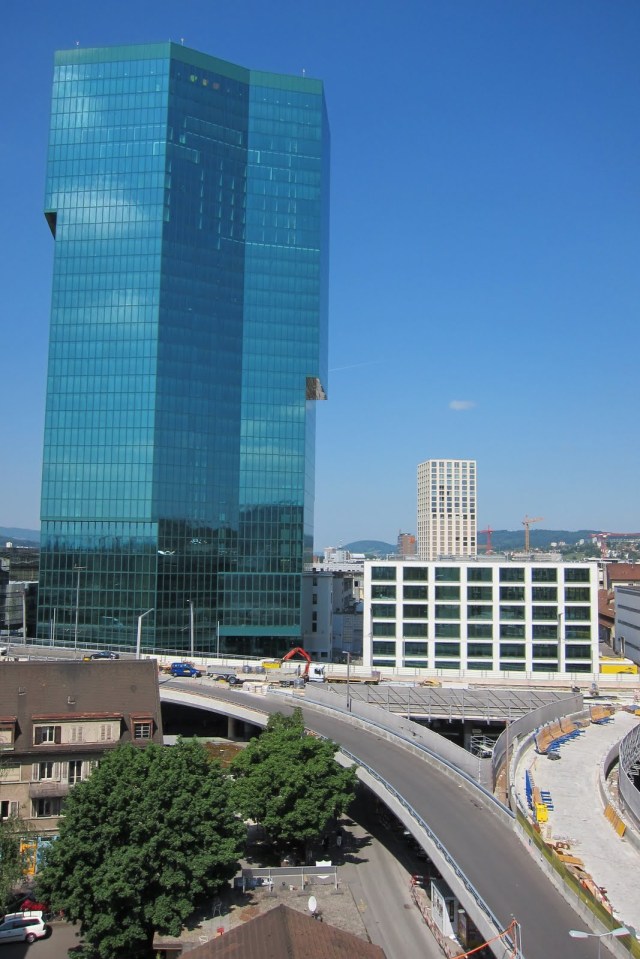By Caspar Lundsgaard-Hansen
Zurich acts like a magnet. A magnet for both Swiss people and foreigners who look for job opportunities in Switzerland. One gets the impression that the city and its surroundings grow at a remarkably fast pace: construction sites, recently completed buildings and expensive cars dominate large parts of the scenery. At the same time costs for accommodation have been rising steadily and also rather sharply, leaving people with lower or regular incomes with hardly any other option than moving out of the city.
This boom is the background for a very dynamic urban development. One area, which – especially in this regard – stands in the limelight is situated to the west of the city centre. For 200 years Zurich-West used to be the unpopular backyard of the city: leprosarium, dangerous factories, highly emissive industries, central cemetery, waste incineration and crime were all located around this part of the city. Today Zurich-West is the primary regional hotspot of urban regeneration. And the change is dramatic.
I can easily remember how my friends and I went on a regular pilgrimage to Zurich-West to dance the night away in one of the area’s famous clubs (Rohstofflager, Toni Molkerei and Dachkantine to name but a few…). These years after the turn of the millennium were quite obviously a very exciting and adventurous stage of the local urban regeneration. But it remains to be seen for how long this particular stage or urban atmosphere can persist. Will it be remembered as nothing more than a few years of creative energy between the ‘out-of-favour backyard’ and a ‘fully regenerated but anonymous working space’ or can the area locally known as ‘Chräis 5’ (District 5) retain some of this atmosphere?
For today the urban development seems to be going the classic way: from abandoned space to improvised space and finally to effectively commercialised space, whereas the single most important symbol for this final stage of urban regeneration is Switzerland’s currently highest skyscraper with the rather awful name ‘Swiss Prime Tower’ (see the following picture and title picture).
Another architectural example of the ongoing transformation regards the ‘Mobimo’ tower around the corner from the ‘Maag’ site, where the ‘Swiss Prime Tower’ tries to allure important business players from around the world. This elegant building by Diener & Diener contains public housing and a reasonably priced hotel.
Although the above mentioned clubs don’t exist anymore Zurich-West as it is today still boasts creative, locally originated attractions. This becomes particularly thrilling when put next to the globalized corporate world (as shown in the following picture with both the Swiss Prime Tower and the flagship store of local fashion brand Freitag).
Hopefully this coexistence of premium working and living space as well as small, creative and independent niches represents the predominant policy of local governmental decision-makers. It would ensure that I would like to go back to Zurich-West in the future as well. Otherwise I might have to turn my back on this particular area again and let it once more become an abandoned space for some 200 years. And I’m not sure which scenario should be preferred in terms of Place Management and Branding…
P.S. This is for the attentive readers of our blog: The article contains one big joke. Guess where it is.




